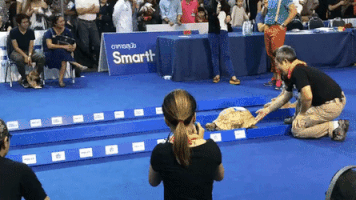
He was also taunting me, saying I couldn't go through with it. I was caught in the moment, he had cut up my friend and tried to eat him. Lee grabs a pitchfork and then you are given the choice to impale him or spare him. John and he ends up getting his foot caught in a bear trap and falls on to a hay bail. Specifically, it's the scene where you have a fight with Danny St.
#Botanicula part 3 flying chomping bug series
The moment in the series which encapsulates this for me is in Episode 2: Starved For Help. What's so special about the game is that Telltale has done an exemplary job at creating characters that are worth caring about and that player has some emotional investment in. The Walking Dead: Episode 2 SPOILERS I could probably fill out this whole category with moments from The Walking Dead (currently poised to be my #1 GotY) but I'm going to pick the one that impacted me the most. If you are going to post about a plot point in a game then please make sure you include a spoiler warning. That could be: beating a boss after several attempts, finally unlocking some impossible achievement, setting a high score, producing an amazing comeback in a competitive match or, in my case, reacting to events in a game's narrative. By moment, I don't mean a few seconds of gameplay but a single experience. This Key is based on the Keys that can be found in the following books.The '2012 Favourite _' threads continue and this time I want to know what your favourite moment was in a game that came out this year. First pair of legs raptorial (used to grasp prey) and held close to the body at rest = Praying Mantidsįront legs not like this and body flattened = Cockroaches.Head narrower than body: sucking mouthparts: abdomen often with a pair of tubular outgrowths ( cornicles) near hind end: insects found on growing plants = Hemiptera
/Update%2003/144-198.png)
/Update%2003/147-204.png)
Body grasshopper-like, with enlarged hind legs and pronotum extending back over abdomen =.Insect wingless or with poorly developed ( vestigial) wings. Start at Question 1 and follow the links until you've identified your insect.
/Update%2003/138-182.png)
Non-members can use the Bug Club discussion forum however membership of this forum is not restricted and we cannot guarantee the help/advice offered. The AES cannot be held responsible if the Key provides an incorrect identification, it is intended as a guide only - if you require a species level identification then please use our identification services or send the insect with comprehensive details of where you found it to the Entomology Department of your nearest University or Natural History Museum. An explanation of many of these terms can be found on the Insect body structure page or within the Insect fact files section. The Key uses some specialised terms to describe specific parts of an insect's body.The Key may not be successful if used to identify insects outside the UK although in most cases it should still produce a correct identification.The Key will only work for adult insects (the imago), it is not intended for juvenile insects, larvae or caterpillars so make sure you are trying to identify an adult insect.

These are still included in the key in order to make the key as useful as possible. The Key also refers to some groups (such as the Protura, Diplura and Collembola) which are considered to be non-insect hexapods rather than insects.Important: This Key will only identify insects to a specific Order, it does not identify to species level (you'll require a specialised book for that or you'll need to use one of our identification services).Please read all the text below before using the Key. It is a good idea to have the insect in a 'Bug Box' whilst you use the Key - it's much easier than relying on your memory. If you've found an insect and you don't know what it is then you can use the on-line Key below to find out what order your insect belongs to. Only the adult males possess the orange tips to the wings that give this species its common name. An adult female orange tip butterfly, Anthocharis cardamines.


 0 kommentar(er)
0 kommentar(er)
